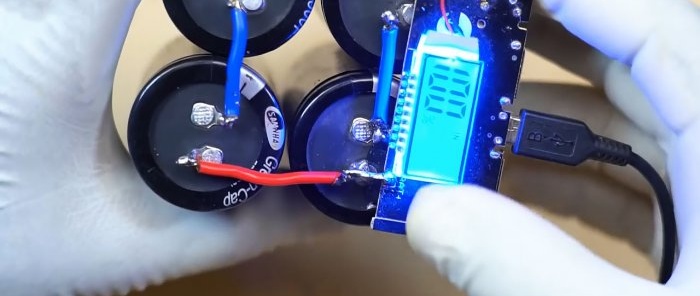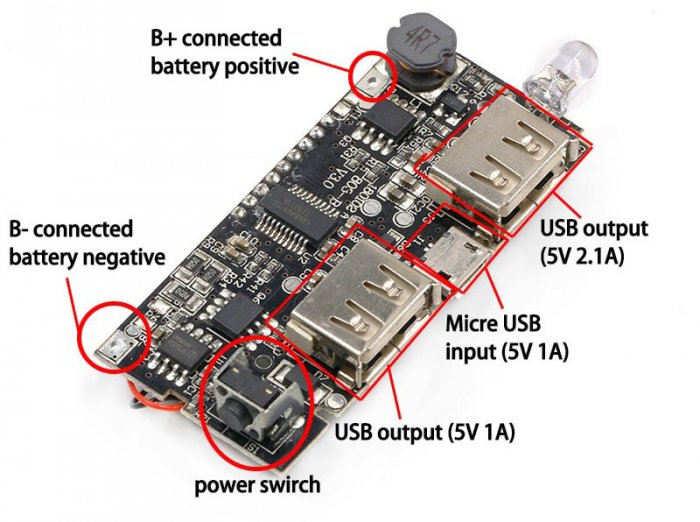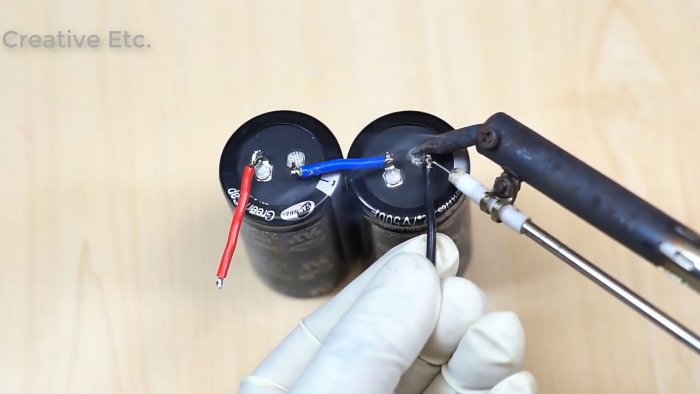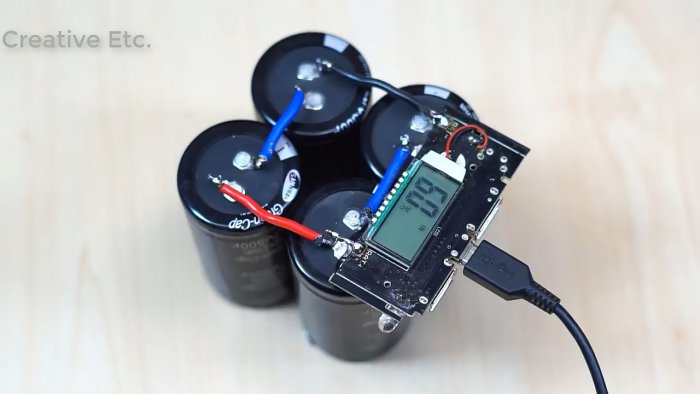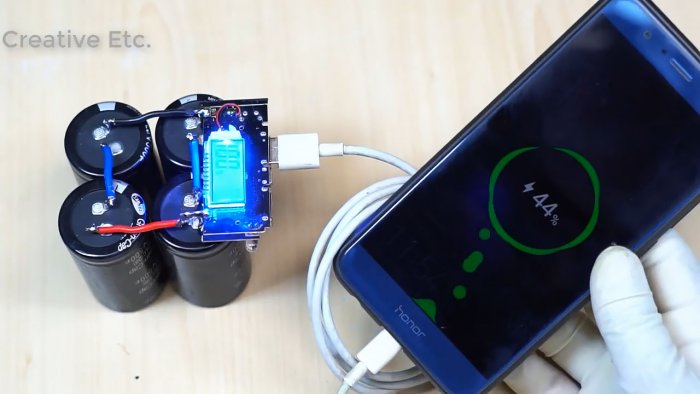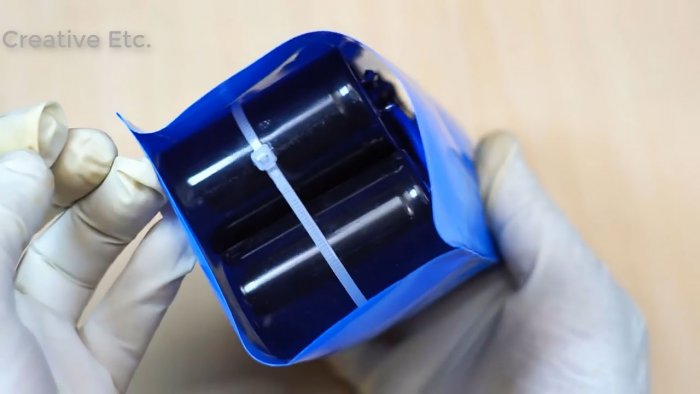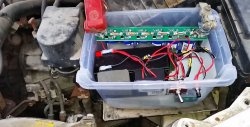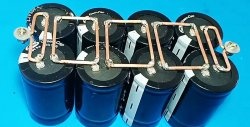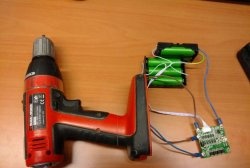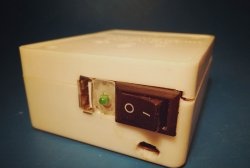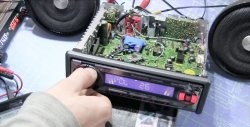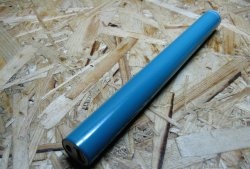Supercapacitors have a colossal capacity compared to conventional capacitors. They also have a number of advantages over lithium-ion batteries, such as: they are not afraid of low temperatures and are not afraid of complete discharge. All this forced me to make a power bank using supercapacitors.
Ordinary power banks, if left idle, will discharge over time, since the elements have a self-discharge. And one fine day, when you need to take the power bank, say, on a hike, it will be “dead” and show no signs of life.
The same model, made on ionistors, will always be ready for work if it is first charged.
Will need
The controller performs several functions at once: it controls the charging and discharging of the battery, protects against short circuits, and displays the capacity of the entire battery on the display.
Micro USB is used to connect the power supply for charging. The remaining two USB are outputs for connecting a load.
Manufacturing a power bank using ionistors
We solder two supercapacitors in series."Plus" to "minus".
We also solder the next two. And now we solder these two pairs in parallel to each other, “plus” to “plus”, “minus” to “minus”.
The result was a battery made from ionistors with a maximum voltage of 5.4 V and a capacity of 1000 Farads.
Solder the controller.
We insert the USB cable and charge our new power bank.
As soon as it’s charged, connect the phone and check if it’s charging.
Yes, everything works fine - the mobile phone is charging.
To insulate all contacts and make some semblance of a case, we will put on shrink film and blow everything with a hot air gun.
Let's cut out a window for the display using a utility knife.
Side view, USB ports open.
Conclusion
In conclusion, I would like to add a fly in the ointment: ionistors have a high self-discharge compared to lithium-ion batteries, therefore, after a full charge, the time of its use is more limited than that of commercially produced devices.
